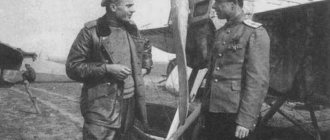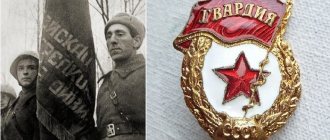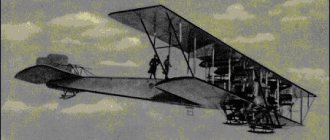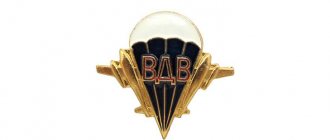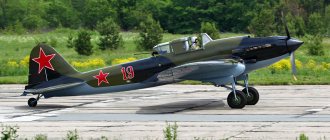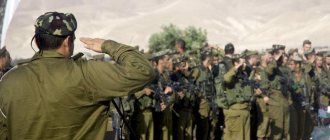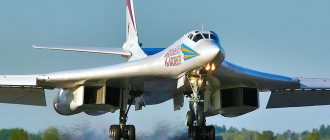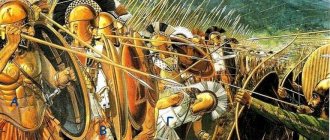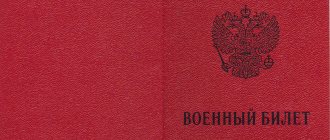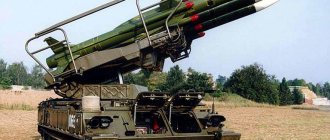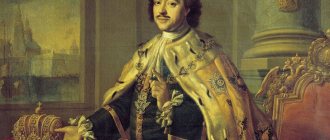photo: feldgrau.info
The Luftwaffe had a clearly organized structure. All air forces were divided into air fleets, each responsible for a certain territory, there were 5 in total (later the figure increased to 9). Each fleet consisted of corps and divisions.
Structure and tasks of the Luftwaffe
The main combat units of the Luftwaffe - squadrons - were divided into groups, and those into squadrons. Each squadron performed specific tasks. There were such squadrons: fighters, night fighters, heavy fighters, attack aircraft, night attack aircraft, bombers, dive bombers, high-speed bombers, transport aircraft, combat trainers, and special forces.
In addition, the naval and reconnaissance units of the Luftwaffe, special forces units and ground military units had a separate structure: communications units, anti-aircraft artillery, parachute and infantry units.
Colors of the military sky: “blue squadrons” against red pilots
As is known, among other
foreign pilots who fought in the Red Army Air Force were Spaniards who emigrated to the USSR after the defeat of the Republicans in the civil war.
However, not only supporters of the fallen republic fought on the Soviet-German front - almost immediately after Hitler’s attack on the USSR, the Spaniards appeared in the ranks of the Wehrmacht, including the Luftwaffe. What was the story of the Franco pilots who decided to repay their debts to the “Bolsheviks”? The rebels' victory in the Spanish Civil War was largely determined by the military support they received from Germany and Italy. Thus, the regime of Generalissimo Franco became a natural ally of Hitler at the beginning of World War II, but the last thing the war-ravaged country needed was to be drawn into a major European conflict. This was aggravated by the unfortunate geographical position relative to potential allies and opponents. Therefore, on September 4, 1939, the caudillo declared Spain's neutrality, and this step was met with understanding by the Germans.
Bf 109F-2 from a Spanish squadron on the Soviet-German front, summer 1942
After the successful German invasion of France, the situation changed, and on June 12, 1940, Franco changed the country’s status from “neutrality” to “non-belligerent”, but, despite pressure from the German government, he flatly refused to enter the war again. His only concession, however, related primarily to domestic political reasons, was the proposal made after the German attack on the USSR to send volunteers to the Eastern Front as reciprocal assistance in the fight against communism.
There were enough people in the army and phalanx (fascist militia) who were willing to provide such assistance, and already on July 13, 1941, the first echelon with personnel of the Spanish volunteer division (División Española de Voluntarios), better known as the “Blue Division” (División Azul) arrived in Germany. . Strictly speaking, the color of the Phalangists’ uniform was blue, and it would be more correct to talk about the “Blue Division,” but we are dealing with a term well-established in Russian historiography. In the Wehrmacht, the division was named the 250th Infantry and arrived at the front near Leningrad on October 14, 1941.
Debut of Blue Squadron
The Spanish Air Force also found those willing to fight the Bolsheviks, and on July 14, the Spanish Expeditionary Aviation Squadron (Escuadrón Aéreo Expedicionario Español), better known as the Blue Fighter Squadron (Escuadrilla Azul de Caza) or simply the Blue Squadron, was formed. The color in this case was a reference to both the division and the famous “Blue Patrol” (Patrulla Azul) of the Civil War - the Spanish unit of the Italian fighter squadron.
The squadron was led by Comandante (Major) of the Spanish Air Force Ángel Salas Larrazábal, an experienced pilot and commander who, during the civil war, won 15 victories personally and five in the group. Organizationally, the unit consisted of three patrols (links) of five pilots each: a commander with the rank of captain, ordinary pilots - tenente (senior lieutenants) plus two pilots at headquarters: the commander and his deputy. In total, the unit consisted of 17 flight personnel, all of whom were veterans of the last war.
In the summer of 1941, a Spanish mechanic lets his pilot go on a training flight.
On July 25, the squadron left for Germany, where it underwent retraining under the guidance of Luftwaffe instructors, received 12 Bf 109E-7 fighters and, as the 15th squadron (staffel) of the JG 27 squadron (15.(span.)/JG 27), arrived on October 1 at front-line airfield in the Smolensk region.
The next day, the Spaniards began to carry out combat missions. On October 3, the pilots conducted their first air battle and suffered their first loss: one of the pilots did not keep track of the level of gasoline in the tank and died during an unsuccessful forced landing. On October 5 (according to other sources, October 4), Commander Salas opened the squadron’s combat account, scoring two aerial victories at once.
The Spaniards took part in the attack on Moscow, retreating back to Smolensk in mid-December and moving further west to Vitebsk in early January. Just as Germany used the Spanish Civil War as a testing ground for new equipment and development of tactics for its use, the Spanish Air Force decided to train as many pilots as possible on the eastern front, while avoiding serious losses. For this purpose, the period of stay at the front was limited to several months.
The "combat tour" of the squadron 15.(span.)/JG 27 ended on February 12, 1942, and its personnel returned to Madrid on March 1.
In just over four months at the front, the Spaniards completed 422 (according to other estimates 460) combat missions and conducted 94 air battles, in which they scored 11 victories. They counted three more aircraft destroyed during assault strikes on Soviet airfields. Own losses amounted to three pilots killed, two missing and one seriously wounded. The most successful pilot of the unit and the only ace was its commander, who won six air and two “ground” victories. There is also information about his seventh victory, but at that time it was not officially recognized.
The Spanish pilot returned from another combat mission on the “anonymous” Bf 109E-7
The aircraft that Blue Squadron flew were not new and were not always intended for the European theater of operations. For example, there was at least one Bf 109E-7 in tropical design and desert camouflage from RLM 79 (sand yellow Sandgelb) and RLM 78 (sky blue Hellblau) paints, in which the sand color, unsuitable for central Russia, was shaded with green spots (RLM 70, RLM 71 and/or RLM 02). But this was still an exception, and most fighters had the standard RLM 71/02/65 livery (dark green and grey-green spots over blue undersides).
All aircraft carried the standard Luftwaffe markings and yellow eastern front identification markings, with the now obsolete yellow painting of the entire nose area, not just the lower part of the cowling. The spinners on different cars were yellow or “sector” black and white.
There were no direct indications of belonging to Spain on the planes, but the Blue Patrol sign was chosen as the emblem, supplemented by the Roman numeral II - a symbol of the second war with communism. The pilots turned out to be absolutely indifferent to individual designations and retained the original appearance of the aircraft they received. The fighters received after major repairs and from storage depots were still used in an “anonymous” form, while those transferred from other units bore fighter tail numbers and “assault” letters and triangles.
Bf 109E-7/B (W.Nr. 3297), formerly belonging to Attack Group II.(Sch.)/LG 2 and transferred to Blue Squadron, probably to make up for losses. In November 1941, it was the personal aircraft of the commander of 15.(span.)/JG 27, Comandante Angel Salas-Larrazabal, and bore the mark of his six officially confirmed aerial victories.
All other markings, including the assault emblem on board, have been preserved from the previous owners. The camouflage is standard, consisting of dark green RLM 71 Dunkelgrün and gray with a greenish tint RLM 02 Grau on the upper surfaces and light blue RLM 65 Hellblau on the lower surfaces. The sides, originally also blue, were darkened by blurry spots of RLM 71 and 02
With the beginning of winter, in November-December, the aircraft received an easily washable and therefore unstable white coating on top of the previous camouflage. At the same time, they tried not to affect the existing identification and tactical marks.
There is also information about Spanish volunteers receiving several modern Bf 109Fs in December 1941, but there is no reliable data on this matter.
Second Squadron
The Second Formation Expeditionary Squadron, commonly known as the Second Blue Squadron, was organized on 6 February 1942. It was led by the head of the fighter school in Reus (Escuela de Caza de Reus) Comandante Julio Salvador y Díaz-Benjumea - also a famous ace of the civil war with 26 personal and four group victories and the only one remaining at that time A surviving pilot of the original Blue Patrol. The new squadron was organized according to the same principles as the old one, only there were two more pilots in it, and some of them were alferez (lieutenants) of accelerated graduation.
Until the end of the month, the pilots trained at home, then continued retraining in Germany, but due to worse average training than the first crew, their commissioning was delayed. The Spaniards arrived at the front-line airfield in the Orel area only in mid-June 1942. JG 27 had been fighting in Africa for a long time, so the Spanish squadron was subordinated to the JG 51 squadron under the designation 15.(Span.)/JG 51.
In the 2nd Squadron it was customary to name aircraft in honor of fallen comrades. This Bf 109F-2 is named after the deceased mechanic
It was armed with, although not the latest, but quite modern Bf 109F-2 fighters, which bore standard German camouflage, identification marks and yellow elements for quick identification of the eastern front, as well as classic black side numbers on the fuselage. Designations of group membership were absent as unnecessary. The same Blue Patrol symbol was chosen as the squadron's emblem, but placed on top of the red cross of Santiago (St. James). In addition, many vehicles featured a large phalanx emblem behind the fuselage cross.
The squadron began combat sorties on June 26, and carried out its first air combat no later than June 28, but the first serious combat in which it participated was repelling a Soviet air raid on targets in the Orel area on July 3. In that battle, the Spaniards won their first victory and suffered their first loss. The next four weeks were the peak of the squadron's activity, scoring as many victories in that month as in the rest of the "tour", and then the focus of both sides moved to the south, where the German offensive on Stalingrad began.
In just five months of participation in hostilities, the second Spanish squadron flew 1,312 combat missions, conducted 117 air battles and scored 13 confirmed victories. The most successful pilot was the commander of the 1st patrol, later deputy commander, Captain Manuel Bengoechea Menchaca, who scored three victories. Own losses amounted to two dead pilots.
Bf 109F-2 (W.Nr. 9609) from 15.(Span.)/JG 51. Theoretically, based on the tail number, it should have been flown by the then commander of the 1st patrol, Captain Bengoechea, but, as far as is known, in At the end of June and beginning of July 1942, the aircraft was used by the deputy squadron commander, Captain Antonio Noriega Labat, and after his death in an air battle on July 3, various pilots were noted on the aircraft, including tenente Federico Garret Rueda ) from the 3rd patrol, who won a victory on it on July 7, and the pilot of the 2nd patrol, Tenente Andrés Robles Cebrián.
The aircraft wears a 1941 camouflage pattern of dark gray with a greenish tint RLM 74 Graugrün, lighter gray with a violet tint RLM 75 Grauviolett and light gray RLM 76 Lichtblau
Third Squadron
Taking into account the experience of the protracted commissioning of the second squadron, the Spanish command began to collect volunteers for the third in advance, forming it on September 1, 1942 under the command of the civil war veteran Comandante Carlos Ferrándiz Arjonilla, who had no confirmed victories. There were 19 pilots under his command (they decided to refuse the position of deputy).
Taking into account past experience, the squadron pilots were trained in two separate groups. While the less experienced pilots of the 3rd patrol carried out training flights, the 1st and 2nd arrived at the front on November 18th. They got acquainted with the terrain and features of the theater under the guidance of the pilots of the 2nd squadron, and on the last day of the month the official transfer of command and aircraft took place. After this, the personnel of the 1st and 2nd patrols of the 2nd squadron left for their homeland, and the 3rd patrol remained at the front until February 1943, when it was replaced by the 3rd patrol of the new squadron, which had finally completed its training.
Tenente José Ramón Gavilán Ponce de León, the second most successful pilot of the 3rd Blue Squadron (nine victories), poses in front of a Bf 109F-2 fighter, inherited from the previous unit.
Most likely, the pilots of the new squadron began fighting in November, but the first official combat flight was recorded on December 1. On the same day, the first loss occurred: due to engine failure, one of the pilots had to land behind the front line. The first victories were won in air combat on December 27.
Around the same time, when the change of command took place in 15./JG 51, its aircraft received the now traditional white winter paint, during the application of which the mechanics carefully outlined all the previous designations. A new emblem was developed for the third-strength squadron, but it was never painted on the aircraft, however, and the existing emblems were not removed either.
Since July 1942, all additions to the Spanish squadron's equipment came from repairs or from other units when they were re-equipped with more modern fighters. At first, the squadron received only Bf 109F-2 modifications, but in January 1943 it received the first two Bf 109F-4s, and then four more in March-April, but this can hardly be called a significant improvement in the situation.
The best ace of the 3rd squadron, Tenente Evia and his Focke-Wulf
Meanwhile, the German units of JG 51 had already replaced all Bf 109Fs with more modern Bf 109G and Fw 190A. Moreover, Group I even managed to exchange the first modifications of the Fw 190 for the new Fw 190A-4 and Fw 190A-5, which created a certain supply of Fw 190A-2 and Fw 190A-3. They decided to hand them over to the Spaniards. On April 21, the Blue Squadron received 15 fighters of this type (five Fw 190A-2 and 10 Fw 190A-3), after which the Spaniards, with a clear conscience, scrapped all 17 Messerschmitts they had due to wear and tear.
Combat sorties on the Fw 190 began on April 25 and quickly showed the superiority of these fighters: in two months they scored almost as many victories as in the five previous ones on the Bf 109. In just seven months of participation in hostilities, the third Spanish squadron completed 1,716 combat sorties , conducted 112 air battles and scored 62 air victories, five of which were scored by the 3rd patrol of the 2nd squadron. Own losses amounted to five pilots killed (including two on the Fw 190), one captured and one seriously wounded. The most successful pilot was tenente Gonzalo Hevía Alvarez-Quiñonez, who scored 11 victories. Besides him, three more officers became aces.
Fourth Squadron
The next squadron was assembled on April 2, 1943. Another civil war veteran, Comandante Mariano Cuadra Medina, who had no confirmed victories, was appointed its commander, under whose command were 19 pilots.
On June 15, the 1st patrol arrived at the front, at the beginning of July it was joined by the 2nd, and on the 5th a formal transfer of command took place. The four surviving pilots of the 3rd patrol of the previous composition again remained to fight along with the newcomers and were replaced only in mid-August.
Pilot of the 3rd patrol of the 4th squadron tenente José Cavanilles y Vereterra and Fw 190A-3, formally assigned to the 2nd patrol
The squadron officially began combat operations on July 5, and the very next day suffered its first loss: one of the pilots was seriously injured during an unsuccessful emergency landing after an engine failure. A day later, the first victory was won.
The Focke-Wulfs that the Blue Squadron received had on the top and side surfaces the non-standard camouflage adopted by JG 51, the basis of which was RLM 71. To it were added spots of RLM 70, Soviet green AMT-4 or brown paint of unknown origin. The lower surfaces retained the factory paint of RLM 76. The aircraft also received standard yellow elements for quick identification, already in the squadron they were often supplemented by a yellow spinner paint (in whole or in part), and less often with a yellow front part of the hood. The side numbers on them were white; there were no emblems or designations of the group. With the beginning of winter, the aircraft received a white paint job, while in order to maintain sufficient visibility of the tactical numbers, they were left with a “edge” of unpainted camouflage.
Officially, 15./JG 51 received only aircraft of the Fw 190A-2 and Fw 190A-3 modifications, but the pilots of the 4th squadron also had the opportunity to fly fighters of later models. These aircraft wore the standard RLM 74/75/76 camouflage and, judging by the markings, were mostly “loaned” by the Spaniards to I./JG 51.
Fw 190A-3 (presumably W.Nr. 5345) from 15.(Span.)/JG 51. According to the practice of assigning tail numbers adopted in the squadron, it should have belonged to the 3rd patrol, but in the fall of 1943 it was flown Tenente 1st Patrol pilot Fernando Sánchez-Arjona y Courtoy, who scored nine confirmed victories between July and September.
The pilot died on November 19 in a plane crash while performing a combat mission in bad weather conditions. The aircraft is shown in camouflage using two green paints (RLM 71 Dunkelgrün and RLM 70 Schwarzgrün)
After the failure of Operation Citadel and the start of the Soviet offensive, the squadron retreated to Smolensk in September, then to Belarus and stopped at Bobruisk at the end of November. In just seven and a half months at the front, its pilots completed 1,918 combat missions, conducted 277 air battles and won 74 victories, 10 of which were attributed to the “instructors” from the 3rd squadron. Own losses amounted to seven pilots killed, three more were seriously wounded - 50% of the total strength of the unit.
The most successful pilot was the squadron commander, who chalked up 10 confirmed victories. Besides him, six more became aces, including one pilot from the previous squadron. Another of the “instructors” became an ace in total victories in two squadrons.
Spanish Focke-Wulfs in winter livery
At the end of the year, 15./JG 51 had nine old and rather worn-out Fw 190A-3 fighters. During January, five of them were either lost or retired, and on January 24 the squadron received new rather than used aircraft for the first time in seven months - five Bf 109G-6s. In February, nine more such vehicles were added to them, and the remaining Focke-Wulfs were sent to the rear. The new Messerschmitts arrived in winter white livery over the factory RLM 74/75/76 camouflage, and their tactical markings and quick identification elements were in the same style as those on the Fw 190.
However, the pilots of the fourth squad did not really have to fight with the new technology, and all their losses and victories were associated exclusively with earlier fighters.
Fifth Squadron
After the German defeats in Tunisia, near Kursk, in Sicily, and especially after the capitulation of Italy, Franco had to try not to go down with the Third Reich. On October 10, 1943, he again publicly declared Spain's neutrality, and on October 12, he ordered the recall of Spanish volunteers to their homeland. On October 18, the withdrawal of the Blue Division units to the rear began, but it soon became clear that a sufficiently large number of soldiers and officers would like to continue fighting, so the command gave the go-ahead for the creation of the Spanish Volunteer Legion (Legión Española de Voluntarios), otherwise known as the Blue Legion ( Legión Azul) - a regimental level unit that was formed on November 17 and returned to the front a month later.
The command of the Spanish Air Force had no intention of recalling its squadron yet and even continued to recruit volunteers for its next squadron. The fifth squadron was formed on October 26, 1943 under the command of Comandante Javier Murcia Rubio, who scored five victories in the civil war. The number and training process of the unit were completely identical to its immediate predecessors.
Bf 109G-6 from 15.(Span.)/JG 51, early 1944
On January 9, 1944, the 1st patrol arrived in Bobruisk, followed by the 2nd on February 19, and the transfer of command of the squadron took place on February 23. Due to the losses suffered, the 4th Squadron was unable to leave anyone at the front, and the newcomers had to go into battle with an incomplete strength (their 3rd patrol ultimately never left Spain).
In just a month, 13 pilots completed 86 combat missions, conducted 6 air battles, losing one pilot killed. There were no aerial victories recorded.
By the time the fifth squadron entered the battle, the Spanish leadership finally decided to curtail its military presence at the front, and on March 6, the withdrawal of the Legion to Spain began. The Spanish squadron received orders to return home on 18 March. If some of the infantrymen still chose to stay with the Germans and fought in the ranks of the Wehrmacht and SS until the last day of the war, then the aviators obeyed the order. Leaving all the equipment to their neighbors at the airfield, on March 26, the Spaniards departed by transport planes to Berlin and then to Madrid by rail, completing the almost three-year history of the Blue Squadron.
Why does an airplane need a wing?
An airplane needs a wing to create lift as a result of the difference in air pressure on the lower and upper surfaces. ... This is called the aerodynamic way of creating lift.
Interesting materials:
How to get dragon souls through the console? How to obtain essential oil from flowers? How to get essential oil? How to get predator equipment? How to get Extra money? How to get an electronic key from the tax office? How to get an electronic key in Privat24? How to get Elets in Terraria? How to get energy in Galaxycraft? How to get energy in Chronicles of Chaos?
